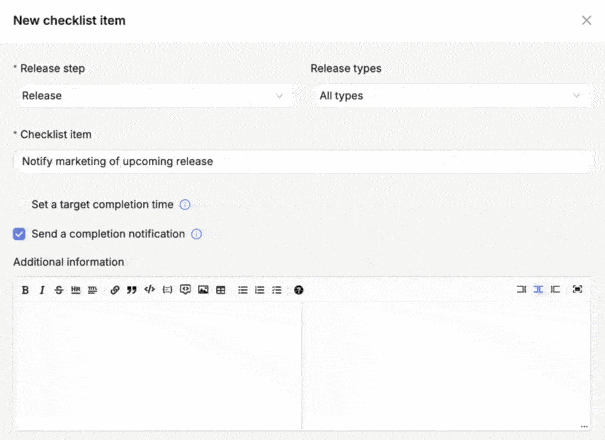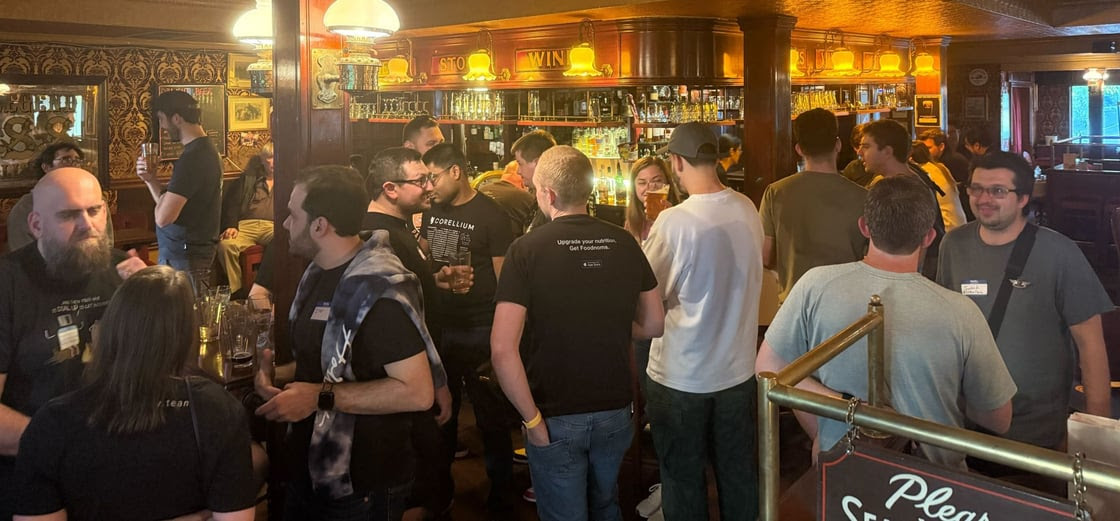Some scientists believe we live in a simulation. I don’t. There was a nature documentary on TV the other day about a parasite that sneaks into a fish’s mouth through its gills, cuts off its tongue and takes its place, then kicks back to relax and eat its own small share of the fish’s food. I have nothing but respect for the grindset mindset on display here, but who would build that into a simulation? You’re telling me there’s a team of Godlike Software Engineers writing the Milky Way Simulator, and some weirdo worked late one Tuesday (or whatever they call it out there) to ship code for the fish tongue parasite? Hmmm, actually, maybe we do live in a simulation.
One thing that’s always real and never simulated is the Flight Deck. Every single month, we bring you reports about foldable iPhones, tell you the best ways to get fixes into your release branch (Cherry-picks? Backmerges? Getting someone else to do it?), share information gleaned from WWDC, and look at how to reduce Android app size.
Read on for this month’s highlights.
Posts we liked
Why I’ve filed over 1000 Apple Feedbacks — and why you should too
Eric Dorphy has been filing Apple Feedbacks since 2014. Many of these Feedbacks have gone unanswered (consider whether you respond to every piece of feedback your app receives and then multiply that by every single Apple developer in the world), but plenty of others have led to action and change on Apple’s part. Most people are not like Eric and don’t bother reporting all the issues or annoyances they encounter, but imagine what would happen if we were and we did.
Continuous AI in software engineering
Continuous testing, continuous integration, continuous deployment; if you’re not doing something continuously as an engineer, are you even doing it at all? The most common way to use AI in engineering work is “on tap”: turning to it when it’s needed and leaving it idle when it’s not. Sean Geodecke delves into why he’s excited about “continuous AI” and what GitHub is doing (he works there) to add AI to the stable of continuous things in software engineering.
Reducing Android app size: Proguard, R8, app bundles, and resource shrinking
The Apollo Guidance Computer which handled most of the flying between Earth and the Moon, had a 32kb hard disk. These days, a simple app that shows the phases of the moon can take up 50mb (source: the actual size of a moon phase calendar app on my phone), and nowadays that feels pretty small! The more storage we have, the more space things we create take up. That doesn’t mean we shouldn’t try to keep app size somewhat under control. Ignacio Carrion explores the most modern methods for Android.
What’s new in SwiftUI for iOS 26
Paul Hudson digs into what’s new in SwiftUI — from the liquid glass interface to draw on animations to how to embed web content with WebView to tons of other updates both large and small (but valuable in how they’ve fixed some annoying issue or another). This article links out to much deeper articles Paul has written about 14 different additions and updates.
iPhone Fold reportedly on track for launch next year
Will a very slightly visible screen crease be the next thing that Steve Jobs never would have allowed in his lifetime? Will foldable phones become the new craze that everyone wants for the next decade? Will your apps need to be foldable in some way or else risk rejection by the App Store? If Apple actually launches the iPhone Fold (iFold?) as expected next year, Android people will enjoy getting to say, “We’ve already had this for 7 years!”
Go figure
Did you know that mobile engineers say the unholy release trinity of manual steps (49%), context switching (42%), and cross-functional coordination (41%) creates a perfect storm that pulls them away from their core strengths and ‘real’ work?
For anyone responsible for managing or contributing to a release, this represents a hidden productivity tax that compounds with each release cycle, leading to burnout risk and unnecessary churn on teams.
If you’d like to learn more about this and other challenges currently faced by mobile engineers on teams worldwide, check out our 2025 State of Mobile Release Management Report.
Posts we wrote and customers who told stories about us
Cherry-picks vs backmerges — what’s the right way to get fixes into your release branch?
Cherry-pick or backmerge? This question either ignites fierce debate or isn't asked in the first place, because teams have just inherited whatever process was already in place and it works OK. If I can get technical for a minute, why fix something that ain’t broke? There's no correct, best answer for every team, but actually asking the question can highlight best practices and areas for improvement when it comes to how you handle fixes in general.
How monday.com’s mobile teams level-up their productivity using Runway
“If Runway disappeared tomorrow, we’d be forced to try and figure out a way to build some of it ourselves. I couldn’t go back to doing releases by hand. I’m too spoiled at this point.” Learn what compelled Shai Mishali — Senior iOS Tech Lead and one of dozens of monday.com engineers who rely on us to manage their mobile releases — to say this.
Runway featured feature
Teams use Runway’s checklist and approval items to capture parts of their release process that can’t or shouldn’t be automated — e.g., specific manual actions, sign-offs, or updates that different team members need to take care of throughout a release.
Even if you don’t use Runway, you probably have some sort of checklist or runbook for this kind of thing. It lays out what needs to be done throughout each release cycle, but doesn’t make sure folks actually do all those things and do them at the right times. This means more work for someone to babysit and remind as necessary.

With Runway, you can attach timing to your checklist and approval items. For example, you could make an item due “two days before kickoff,” “at submission time,” or “one hour after release.” When you attach timing to an item, that timing is surfaced clearly in Runway as a visual reference. It can also power reminder notifications which fire if a deadline arrives and the corresponding item hasn’t been marked as complete, so that everything gets done and no one has to chase folks down to make that happen.
Events
Runway’s WWDC party was a blast! Steve Wozniak was not there, but one of our literal release pilots was:

As were 100+ other people throughout the evening, both indoors…

...and out:

We also hosted a droidcon NYC after after party complete with a Mets game on the TVs.

Miss out? There will be plenty more opportunities to eat and drink with Runway and other mobile software folks in the coming months. We don’t have any events planned for July or August, but we'll be back out in the world in September and October. Keep an eye out for some invitations later in the summer.
This newsletter may be over, but if your programming inside the simulation we all live within compels you to want more, you can read the 22 previous editions of The Flight Deck on our site.

























